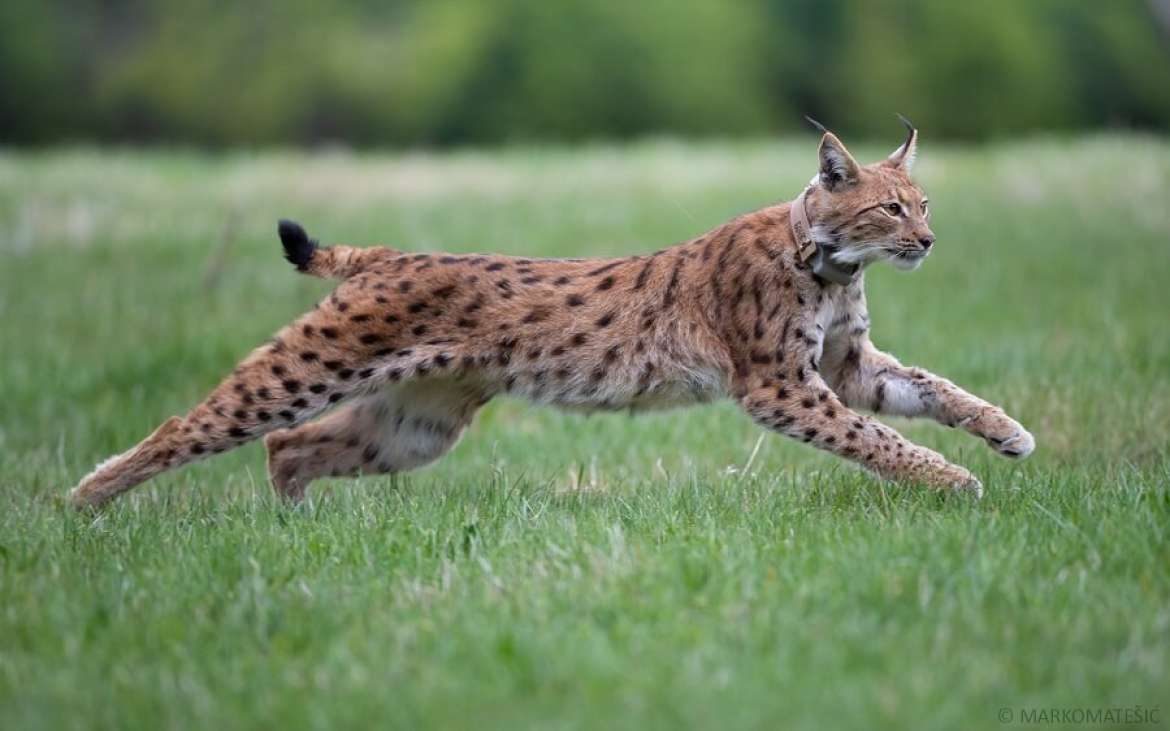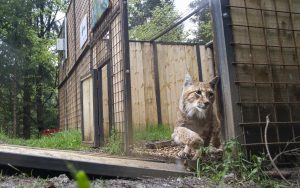The LIFE Lynx project, which works to conserve and enhance the endangered Dinaric-SE Alpine lynx population, has just joined the European Rewilding Network. In taking network membership to 70, this highlights the continued growth of Europe’s rewilding movement.

Missing lynx
The Eurasian lynx population of the Dinaric Alps of Slovenia and Croatia was driven to extinction in the early twentieth century, largely as a result of habitat loss, lack of prey and human persecution. In the early 1970s a group of hunters and foresters reintroduced six lynx to Slovenia’s Kočevsko region from the former Czechoslovakia, but while their numbers gradually increased, the animals remained isolated.
By the mid-1990s the population was back in decline, mainly due to genetic deterioration. Today it is small, isolated and extremely inbred, with an estimated 20 lynx remaining in Slovenia, and 40 to 60 in Croatia.
Timely boost
 Starting in 2017, the objective of the seven-year LIFE Lynx project is to rescue the dwindling Dinaric-SE Alpine lynx population and ensure its long-term sustainability. These efforts have just received a timely boost, with the LIFE Lynx project admitted to the European Rewilding Network as its 70th member.
Starting in 2017, the objective of the seven-year LIFE Lynx project is to rescue the dwindling Dinaric-SE Alpine lynx population and ensure its long-term sustainability. These efforts have just received a timely boost, with the LIFE Lynx project admitted to the European Rewilding Network as its 70th member.
Project coordinator Rok Černe is delighted to be helping the network reach such an important milestone.
“We are really looking forward to sharing our results, insight and experience, and to learning from other European rewilding projects,” says the Slovenian. “Hopefully the knowledge we have gained can be used to enhance the effectiveness of other similar projects.”
Critical conservation

The LIFE Lynx project is working to enhance genetic diversity by reintroducing 14 Eurasian lynx into Slovenia and Croatia from Slovakia and Romania. It will also reintroduce further animals into Alpine areas to improve connectivity between regional sub-populations. Five countries are involved (Italy, Croatia, Slovenia, Romania and Slovakia) and a diverse range of stakeholders, including local communities and hunters.
In May 2019, the first of the 14 lynx – two males from Romania – were translocated. “Doru” was released into the wild in Croatia’s Risnjak National Park, while “Goru” was released in the Slovenian municipality of Loški Potok (following a period of quarantine). GPS collars will enable project researchers to track their movement and integration into the local lynx population.
A living network
Today rewilding is gaining momentum as a progressive and effective approach to conservation in Europe. Underpinning this trend, the burgeoning European Rewilding Network continues to foster collaboration and amplify results.
Founded by Rewilding Europe in 2013, the aim of the network is to enhance the efforts of each member by facilitating the exchange of skills, insight and experience. Members meet regularly, usually via webinar, while nature-based businesses can also apply to Rewilding Europe Capital, Rewilding Europe’s enterprise loan facility.
Rewilding Europe extends a warm welcome to all European rewilding initiatives and encourages them to apply for ERN membership.
Want to know / experience more?
- Learn more about the European Rewilding Network
- Visit the LIFE Lynx website
- Visit the LIFE Lynx Facebook page
- Witness Slovenian rewilding first-hand with the European Safari Company

